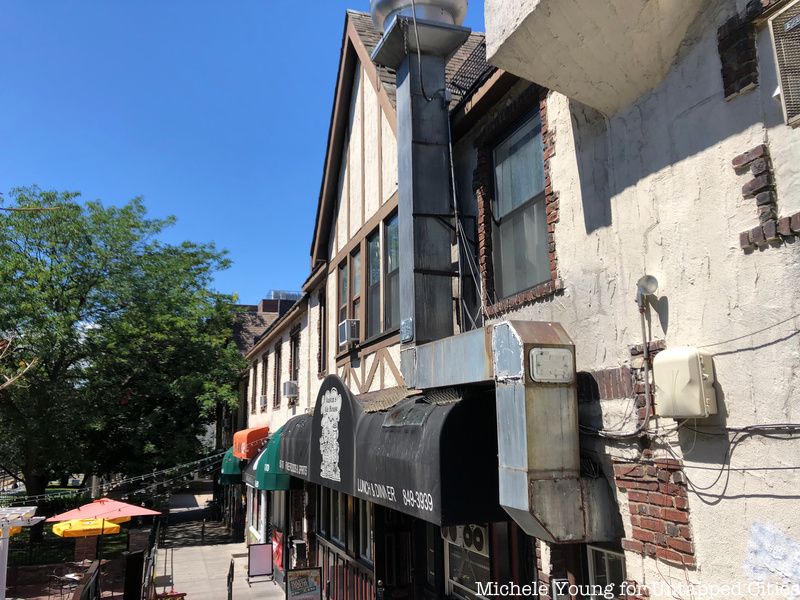Supper Segreta (Secret Dinner) at a Gelateria
Celebrate the best of Italian Gelato in a festive and unforgettable atmosphere!


On the evening of March 13, a young woman named Kitty Genovese was brutally murdered outside of her apartment building in Queens while more than three dozen witnesses gaped out their windows and did nothing. When the story of what happened ran in the New York Times, the public and politicians were outraged, academics scurried into action, and wholesale changes to emergency response, like the creation of 9-1-1, soon followed. Except much of what we just told you might not be true. The murder of Kitty Genovese remains a subject of much dispute, the actual details of her death having long given way to an entire sociological and psychological inquiry.
Genovese drove home at 3 am from her shift as a bar manager. After parking her car, she was approached by a stranger, Winston Moseley, who eventually gave chase, and stabbed her twice in the back as she screamed for help. One neighborhood resident heard the commotion and yelled at Mosley to leave her alone, and he fled. A few minutes later, however, Moseley ambushed Genovese again in her vestibule, and this time he killed her. This time the only witness was a gay neighbor who fled into his apartment, then onto the roof, then into a neighbor’s apartment, where they called the police.
Calling the police in those days was kind of like the experience of going to a police station now, which makes sense, because you would be calling the local precinct. An unfriendly voice on the other end might give you a hard time, or ask a bunch of questions before getting to helping you. The police and ambulance did eventually show up on the scene, and the murder, just one of the many in the rising crime era of 1964, got little media attention.

Back alley behind Austin’s Ale House

Two weeks later, the New York Times new hotshot Metro editor A.M. Rosenthal was chatting with Police Commissioner Michael Murphy about Moseley, who had since been caught for a different crime and confessed to a whole string of random murders of young women. Murphy planted the seed that the murder had been done over a long period of time in front of a crowd of apathetic witnesses, part of his larger theory that race riots were causing people to lose their compassion for human life. The Times story ran on March 27, and was a sensational indictment of Kew Gardens, where the murder had taken place, and of the psychology of New Yorkers, generally, who would let their fellow person die helplessly. The article, which specifically numbered 37 witnesses, did not provide any of their names. You can read the original New York Times story by scrolling down on Murderpedia.
Moseley, now 80, is serving a life sentence. He brazenly applied for parole in 1977, arguing, “The crime was tragic, but it did serve society, urging it as it did to come to the aid of its members in distress or danger. Moseley had been living a double life, married with children and employed full-time, but occasionally going on crime sprees late at night.

The murder spawned numerous academic studies about “bystander effect,” the notion that people lose their moral compass in crowds. While it turns out that there is significant merit to this theory, demonstrated by Fordham University Professor Harold Takooshian, the Genovese murder isn’t the best example. A number of writers, including Kevin Cook, have found that there were only a handful of witnesses to the incident, some of whom did call the police. The two separate attacks lasted seconds, not 30 minutes. Kew Gardens was actually a pretty safe, neighborly place, and residents loathed the subsequent coverage. The Times coverage also, in a homophobic nod to popular opinion (the Times had just written concernedly about the growth of open homosexuality), declined to mention that Genovese was a lesbian.
The aftermath also featured a major government response, even a Presidential Commission. It led to “Good Samaritan” laws that legally protect people in danger.In New York City, it was determined that people calling the police should call a central clearinghouse that would provide fast, effective service. In fact, even writers who disagree about the details of the murder agree that it led to the creation of “9-1-1.” Unfortunately, the most dedicated site about the history of 9-1-1 we could find argued that the Genovese origin story is a myth:
[T]here is no mention of the Genovese murder in the documents on the development of 911 or the President’s Commission on Crime. There is also no documented connection between the murder and the need for a 3-digit number. Instead, the incident highlighted the need for a central comm center, instead of citizens calling the nearest precinct and talking to the desk sergeant. Our conclusion–no direct connection between the murder and the eventual implementation of 911.
While we may never know, other than a tragic death, what exactly happened the night of March 13, 1964, or even what happened in the aftermath of the Genovese murder, we learn that, if nothing else, once misremembered, history has a mind of its own.
[Update: The Witness is a 2017 documentary, that follows Bill Genovese, Kitty’s younger brother as he revisits the facts around the murder. Read more about it here.]
For the morbid inclined, read more about other notorious crime scenes in NYC. Read more about New York political history at Janos.nyc.
Subscribe to our newsletter